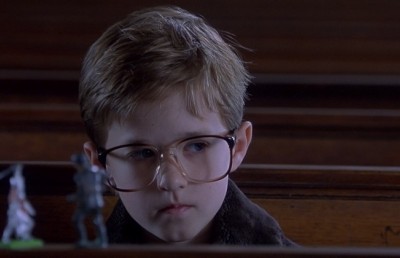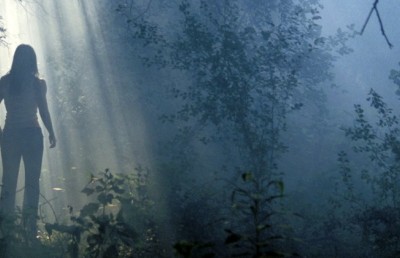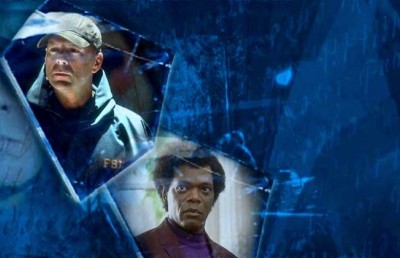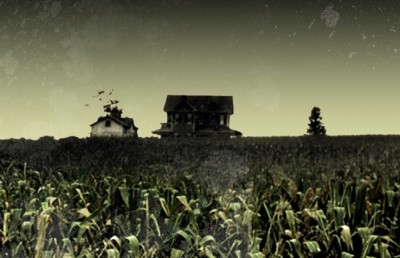Sex and Violence: Journey into Extreme Cinema
Extreme Italian Cinema
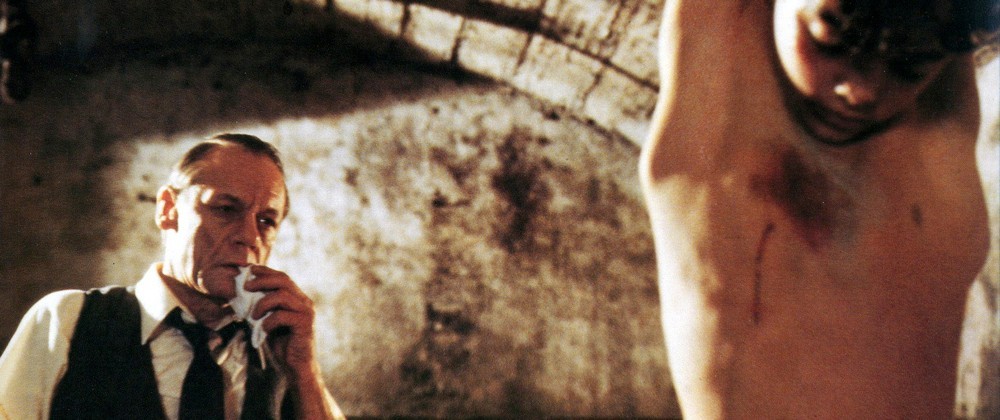
Frequent Offscreen contributor Roberto Curti, along with co-author Tommaso La Selva, have just published (Lindau Press in Turin, September 2003) a book entitled Sex and Violence: percosi nel cinema estremo (Sex and Violence: Journey into the cinema of the extreme. With the explosion of non-mainstream cinema through the DVD revolution, the timing for this book could not have been better. No doubt the book is ‘of its time’ partly because so many horror and exploitation films are now readily available on DVD, making such a book a far more feasible venture in every sense. Although the book is written in Italian, it covers all national cinemas, using the criteria of films that the authors felt were lesser known or needed to be rediscovered. With such a marketable topic as ‘sex and violence’ you would think that books of this order would be common, but this is in fact one of the first books to treat films that contain extreme representation of sex and violence. To clarify the book’s title, not every film dealt with in the book contains extreme representations of sex and violence, although a good many do. The book that come closest to this is the seminal Immoral Tales: European Sex and Horror Movies 1956-1984 by Pete Tombs and Cathall Tohill, while two other books contain considerable cross-over because they happen to discuss some of the same filmmakers, Pete Tombs’ Mondo Macabro: Weird and Wonderful Cinema Around the World (1997) and the more recent Fear Without Frontiers, edited by Steven Schneider and released by FAB press in 2003. There are of course plenty of books on important single directors whose works would qualify for the subject of sex and violence, such as Jess Franco, Pete Walker, and Jörg Buttgeriet, but none that have structured their vast selection, as this book has, around a thematically argued position.
It is interesting to note that the confluence of sex and violence has always remained a taboo in American cinema, confined to the underground lair of works by authors such as David Kern, Lyda Lunch, Beth B. and Nick Zedd. A few above ground exceptions are Stuart Gordon’s unrated Re-animator (1985) and the films of Larry Clark (although neither is exactly mainstream). However, sex and violence could always be found lurking comfortably away from the perimeter of mainstream American cinema. In fact, during the glorious golden period of Hollywood, studios and producers that were not part of the exclusive major (Warner Bros., MGM, RKO, Paramount, Fox) and major minors (Universal, Columbia, United Artists) went out of their way to venture in places where the big studios could not because of the Production Code. And this usually meant the areas of sex and violence. Producers of exploitation film could not match the big studios for production value or star power, but instead thrived on giving audiences what the big studios could not: controversy, sexual titillation and violent subject matter. Hence while it is not surprising that the bulk of Sex and Violence deals with European and Asian cinemas, the authors have clearly done their homework by beginning with the origins of sex and violence in early American cinema, with their first chapter entitled: “Mondo Weirdo: The Four Generations of American Exploitation.”
One of the book’s aims is to demonstrate how underground or extreme cinema and popular cinema are part of the same human experience, and have more cross-pollination than many conservative thinkers would want you to believe. Their critical approach, then, is not to create a rigid division between the underground fringe and the mainstream, but treat them as two co-existing elements of the human imagination. As the authors write in the introduction:
This, then, is the cinema which we are talking about in this book, from Herschell Gordon Lewis to The Last House on the Left, from Arrabal to the American underground of Nick Zedd and Richard Kern, to the Italian nazi movies, to Jörg Buttgereit: an inexhaustible underground current which has crossed (blending them but without losing their uniqueness) with popular cinema and cinema of authorship, making even more evident, if it was ever in doubt, the ephemerality of certain labels and divisionary barriers; a cinema which bathes in the shores of the so-called mainstream, while at the same time drinking from a divergent and stimulating (counter) culture; which provokes and upsets, attracts and repulses, pleases and disgusts (p. 10).
Although the authors approach their subject with serious academic rigor and sensitivity to cultural difference, they do not make any excuses for some of the more extreme films. As they write, “Everything is marketable and has been sold, but notwithstanding dubious re-evaluations or particularly disingenuous offerings, there are also those films which resist easy justifications or alibis of any kind, artistic or aesthetic. They simply exist. And in a society in which such imagery has become part of the everyday, it is impossible to turn a blind eye to these images or pretend they do not exist.” (p. 10)
The authors make no claims for being exhaustive, or of being a ‘dictionary’ of sex and violence in cinema, and yet they have left no stone unturned where seminal areas are concerned. I applaud their decision to eschew exhaustiveness in favor of being able to allow amply coverage for each subject. The second chapter signals a response to American cinema covered in chapter 1: “The Other Side of the Mirror: Extreme European Cinema.” Covered here are seminal horror films (Les yeux sans visage, Georges Franju, 1959, Peeping Tom Michael Powell 1959), (briefly) the British Hammer films and later “Video Nasty” period, Pete Walker, the German krimis, Jean Rollin and his lesser known contemporary Mario Mercier (sculptor/painter/writer turned director), French porn cinema of the 1960’s, 1970s, pre- and post-Franco Spanish horror, with a concentration on the lesser known but extremely interesting Eloy De La Iglesia. The latter coverage is especially well-researched and places a large emphasis on how filmmakers maneuvered the turbulent Franco political landscape.
One of the book’s highlights is the 75 page chapter 3, entitled “Theories of Provocation,” which breaks across national boundaries to examine the manifestos and intellectual preambles behind the works of cinema’s greatest provocateurs and agitators. The authors are particularly true to their critical aim of bridging the popular and the extreme in this chapter, where they comfortably move among the surrealists (Luis Bunuel, Fernando Arrabel, George Bataille, Andre Breton, Alexander Jodorowsky), the underground and avant-gardists (David Kern, Jack Smith, the Kuchar twins, Andy Warhol, Paul Morrissey, Roland Lethem), the modernists (Alain Robbe-Grillet), the East European iconoclasts (Dusan Makavejev, Andrzej Zulawski, Walerian Borowczyk), the political mavericks (Alberto Cavallone), and the popular iconoclasts (John Waters, Jesus Franco).
Chapter four (“…and Traces of Violence on the Body: the 1970s’ and Extreme Cinema”) concentrates on extreme cinema of the 1970s, and chapter five extreme Italian cinema (“The Savage Eye: Italian Extreme Cinema”). As suggested by the chapter’s opening section, “The Long Road of a Tormented Country,” the authors argue that the usual icons of Italian extreme cinema (Bava, Fulci, Pasolini, Bene, Argento, et al) must be contextualised within the turbulent social and political post-World War two events (post-war misery and poverty, the reconstruction period, the economic boom period, the migration of Southerners to the North, 1968 and the sexual liberation, political terrorism, etc.). Another important factor the authors point to is a government law to help the funding of films (the “Corona Law” or 1213/1965) which encouraged a ‘cinema of quality’ on the one hand, but put in place a system of funding tied to the box-office intake of films. The result was a competitive system which placed a great value on a film’s commercial potential, which ultimately lead to an escalation in the treatment of sex and violence (p. 245-246). Where previous books on Italian cinema (in English anyway) have outlined a similar political/social background, like Mira Liehm’s Passion and defiance: film in Italy from 1942 to the present (1984), Italian Cinema by Peter Bondanella (1983), or The Italian Cinema by Pierre Leprohon (1966), these books completely overlook the cinema of the extreme (with the exception of Pasolini or Carmelo Bene). Sex and Violence addresses this omission by placing the extreme cinema directly within the center of this context:
Within a cinematographic system which moves with a rhythm that is different and contradictory with respect to changes in external reality…the 1970s saw extreme representation penetrate genre cinema and the cinema of auteur perhaps to an extent unequalled in any other country or period (in defiance of a myopic and obscurantist censorship supported by decrees from regional magistrates). The momentum impregnates stylistic and narrative choice, conditioning the modality of representation in a turbulent and uncontrollable crescendo which culminates in Pasolini’s Salo, a point of no return for a cinema which dares the unimaginable. From that moment on, in a few short years, the extreme is characterised by a filmography that is schizoid and centrifugal, which creates and destroys genres with inexhaustible ardor, which from scatology (even from auteurs like Pasolini and Cavallone) passes to cannibalism in films like Cannibal Holocaust, to autocannibalism –literally, with The Anthropophagus Beast by Aristide Massaccesi; leading to appropriate tombstones such as Argento’s Tenebre, Fulci’s The Beyond and The New York Ripper, which signal the collapse of an internal production system and the end of a period, now at its end. (246-247)
The fact that the chapter on Italian cinema is one of the longest in the book (pages 245-312) no doubt reflects the authors’ first hand knowledge and expertise in the area. The chapter moves effortlessly from the gialli and spaghetti westerns, the ‘sexy horror’ films of the 1960s and 1970s, the mondo films, with extended stops on seminal films Cannibal Holocaust and Salo, the latter which includes a fascinating blow-by-blow account of the film’s troubled production history with Italian censors, to the last gasp of extreme Italian cinema, the graphic gore films of the 1980s.
The next chapter on Latin American horror is the shortest at only 14 pages, half being dedicated to the Brazilian Jose Mojica Marins. More space is dedicated to extreme Asian cinema in the following chapter, “Violated Angels: Extreme Cinema of Asia” (Chapter 7, which encompasses Hong Kong (Category 3 films), Japan (pink, roman porno, and ero-guro films, and the “new Japanese ‘black’ cinema from Tsukamoto to Miike), and South Korea. The section on contemporary Japanese “black cinema” is especially fluid in its ability to succinctly analyse and contextualise where this extreme form of cinema has come from and where it may be heading:
The recrudescence of violence is a phenomenon that permeates all Japanese cinema of this period (think of Kitano Takeshi and his debut in 1989 with The Violent Cop). But to decipher the new course of Japanese cinema in the last decade (especially the fantastic) it is necessary to consider the profound infiltration of Western influence: broken down, remodeled and made subservient to the particularities of Japanese culture: if on the one side Cronenberg and Argento have not passed by in vain, on the other side what is palpable in the works of directors emerging in the 1980s is the influence of an “Apocalyptic culture”: which revolves around splatter and gore, cyperpunk and underground comics; whiffs of antichristianity, neoprimitive tendencies, fascination with the figure and work of the serial killer, assorted sexual perversions, postindustrial aesthetics, and visual and aural experimentation; all of which forms a clear antithesis to the New Age movement. (p. 350)
In Chapter 8, “The Face of Death: Suffering, Torture, Instant Death from the Mondo to Snuff,” the authors go deep into the belly of the beast. The chapter opens cleverly by analyzing death as an iconic image, more precisely, “Saint San Sebastian in the cinema: notes for an aesthetic of martyrdom.” One of the central points here is that, in a genre where women are notoriously victimized, images of martyred women are quite rare. Two seminal films here are Pupi Avati’s The House with the Windows that Laugh (1976) and Agustín Villaronga’s In a Glass Cage (1986). From here the subject turns ugly, beginning with the well-known production history behind the Michael and Roberta Findlay Slaughter turned snuff film Snuff by opportunist producer Allan Shackleton, and moving on to other faux snuff films (The House on Dead End Street, the Guinea Pig series). Given that there have not been any authenticated cases of snuff films, the authors rightly spend as much time discussing why the myth of the snuff film remains so pervasive, as the films themselves. The snuff film is naturally followed by a discussion of the autopsy film, and again the authors show ‘good taste’ in their eclectic selection, which includes a comparison between the Spanish short Aftermath (Nacho Cerdà, 1995) and the avant-garde documentary short The Act of Seeing With One’s Own Eyes (Stan Brakhage, 1972). The chapter concludes in a 180 degree aesthetic turn from the chapter’s opening subject, martyrdom, with the shockumentary (Faces of Death, Traces of Death, The Shocks).
In the penultimate chapter, “Long Live the New Flesh: From Amateur Splatter to Extreme Porno” the authors make links between what in horror theory is usually referred to as the ‘body horror’ of the 1980s, and its pornographic equivalent. Feminist writer Linda Williams coined the term ‘body genres’ to define films that accentuate the corporeal experience: horror (violence), porno (orgasm), and melodrama (weeping). 1 At a theoretical level, the 1980s marks the ‘climactic’ merging of two aspects of the body genre (horror and porn) in the ‘body horror’ sub-genre, symbolically represented with the appearance of porn icon Marilyn Chambers in Cronenberg’s body-horror prototype, Rabid (1977). This dynamic forms the backdrop of chapter 9. Included in this scenario are the ‘fifth generation’ film buffs turned directors who took advantage of the video revolution and any low tech means available (super 8, betacam, 16mm) to make horror films that were more intertextual that previous generations (Frank Henenlotter, J. R. Bookwalter, Jim Muro, Troma films, Jim Van Bebber, Buddy Giovinazzo, Hugh Gallagher, Scooter McCrae), and in some cases, notably Van Bebber and Giovinazzo, were able to expose the psychic traumas of a disillusioned urban youth. The “corpse-fucking” art of German Jörg Buttgereit is next in line. Buttgereit’s clinical and depressed treatment of necrophilia in his shocking debut Nekromantik (1987) upped the ante for extreme cinema of sex and violence. As the authors note, Cerda’s Aftermath and Buttgereit’s Nekromantik (1 and 2) may signal a saturation point for sex and death, but without these films there would be no Szamanka (A. Zulawski, 1996) or Trouble Every Day (Claire Denis, 2001). Unfortunately, Buttgereit’s notoriety opened the door for far less talented German copycats: Olaf Ittenbach (Black Past, 1999, The Burning Moon 1992, Legion of the Dead 2000) and Andreas Schnaas (Violent Shit 1989, Zombie 90: Extreme Pestilence 1990). Whereas Buttgereit (and Cerda) use extreme imagery to an artistic end, the latter seek only to titillate and shock. As the authors write, “Setting the record for most blood used on the set…is not enough to earn your stripes as an outsider. Extreme is not a question of quantity; in fact, the discomfort factor seems to diminish in inverse proportion to the increase of the primary material, especially when the latter is offered with an indifferent lavishness” (p. 413). The chapter concludes with a brief discussion of “porno-horror” (Sexandriode Michel Ricaud, 1989, Fantom Kiler Roman Nowicki, Vampiros Sexos & Killing Mom Carl Andersen, 1988, 1994, Lurid Slave Thomas Zupko, 2002).
The book’s final Chapter 10, “A Mirror of My Desires” discusses what the future of extreme cinema may hold for an audience no longer easily shocked by images in a post-9/11, 21st century reality saturated with ‘real’ horror. While mainstream cinema maintains audience interest by increasing the realism of ‘extreme horror’ with louder (5.1 Dolby Digital) and bigger screens (asn an example the authors refer to the terrifying opening of Saving Private Ryan), where does extreme cinema go? As the authors prophetically state, “we get the cinema we deserve.” In today’s image landscape what is “extreme” is the amount of choice we have in what to look at, where, and how (Reality TV, digital cable, satellite, comics, magazines, newspapers, internet, video games, telephone screens, palm size computer screens, films on personal computers, webcams, HDTV television, large televisions, widescreen televisions, films in theatres, etc.). The authors wonder: Is this increase in quantity enough to satisfy a spectator’s need or desire for the sensation of horror, or ‘extreme’ imagery? How have contemporary filmmakers of the extreme reacted to this environment? The authors give their views on films that work and films that do not (with some critical evaluations which will surely surprise a few), but admit that this is not an easy question to answer. Instead, the authors give us plenty to think about so that we can formulate our own answer and look ahead with a good understanding of what has come before.
Suffice to say that things have changed and with it the notion of what audiences will find extreme. As the writers lamentably observe, when young audiences watching The Exorcist today laugh at scenes that terrified and shocked audiences a generation ago, you know that the times are a changin’ (p. 437). In their concluding remarks – with which I am in sympathy – the authors seem to re-invent the definition of ‘extreme’, when they offer the films of idiosyncratic auteurs Guy Maddin, Alesandr Sokurov, and Derek Jarman as being more extreme in today’s landscape than films such as Baise-moi (Virginie Despentes, 2000) or Irréversible (Gaspar Noé, 2002). Since neither extreme sex nor violence has much of a role in the works of these directors (with the exception of Maddin, and snippets of Jarman), the statement seems to fly in the face of all that came before. Although partly polemical, the statement is in fact in keeping with the book’s critical spirit (“Extreme is not a question of quantity.”): As they ask, “Who –or what- is more extreme today? Kerkhof 2 or Sokurov? The non-simulated sex scene (in an era of marketing) in Baise-moi or the blue screen of Yves Klein’s monochromatic clothes for the full 76 minutes of Derek Jarman’s Blue (1993)? [p. 438]
Sex and Violence is a vital book on a subject that is largely overlooked in film studies. The dearth of material on this subject is partly a result of the intimidating (and in terms of genre seemingly incompatible) range of cinemas that are involved, both in terms of nation and genre (horror, porno, art house, avant-garde, cult). Rather than taking the easy route of limiting their scope to one or two countries, Sex and Violence tackles the subject head on with a comprehensive national overview of ‘extreme’ cinema. So comprehensive in fact that even Montrealer Karim Hussain’s hard-to-see debut feature Subconscious Cruelty (2000) is discussed. 3 Composed (largely) of secondary research, primary research, and textual analysis, Sex and Violence marks an important contribution to the study of the horror genre. More than that, it takes an often disrepute genre, horror, and places it at the center of a dynamic interchange between the body (visceral feelings, violence, sensuality) and the mind (intellectual thought, social and political engagement) which seems ever more pressing in today’s increasingly interactive, virtual, and digital cinematic landscape. As it is written in Italian, the majority of Offscreen readers will, unfortunately, not be able to read the book. I have attempted to give you an overview of the book’s value, but nothing can replace a close reading of the text for yourself. Here’s hoping that the new year sees an enterprising publisher take the initiative to translate the book for an English audience!
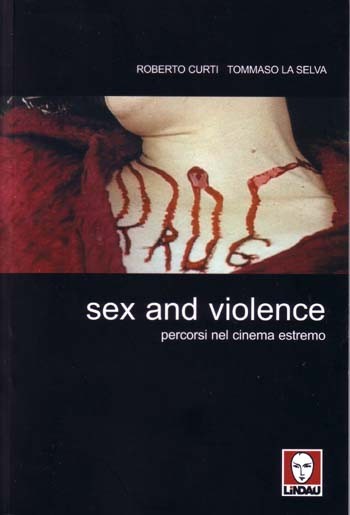
All Italian to English translations done by Donato Totaro.
PS: The Lindau website is currently under construction. The book can also be purchased through the online sites Bol and Thrauma.
Addendum: Sex and Violence is now in its second edition, released in 2007. The second edition is not simply a touch-up but a major revision, with approximately 130 extra pages (620 up from 490). Chapter 7 on extreme Asian cinema and the concluding chapter 10 have been rewritten from scratch and considerably lengthened. The final chapter has been completely updated to incorporate the cycle of recent ‘survivalist’ and ‘hardcore’ (or ‘hardgore’) horror (Fred Vogel’s AugustUnderground trilogy, Hostel, Wolf Creek, etc.). Sections have been added on Greek cinema, Brazilian sexploitation (the pornochanchadas), and Ken Russell. An indispensable book has become even more so.
Notes
- Linda Williams, “Film Bodies: Gender, Genre, and Excess,” in Film Genre Reader 2, Barry Keith Grant (Austin: University of Texas Press, 1995, 142. ↩
- Ian Kerkhof is a South African director who has made controversial semi-documentaries like Nice to Meet You, Please Don’t Rape Me (1995), Wasted! (1996), and Ten Monologues from the Lives of the Serial Killers (1994) ↩
- The authors write that Hussain’s film can not be shown in Canada, however, the film has been shown on several occasions publicly at a Montreal Repertory theatre. ↩



